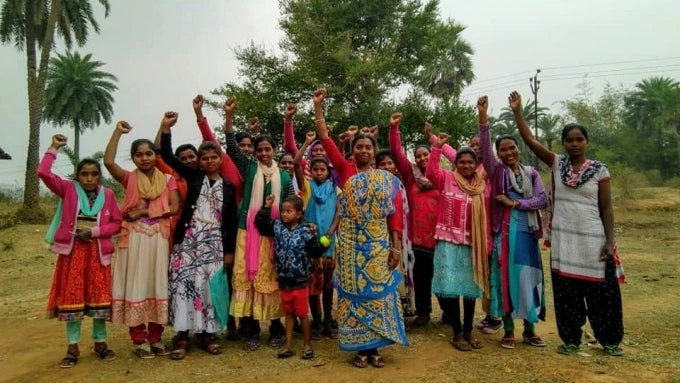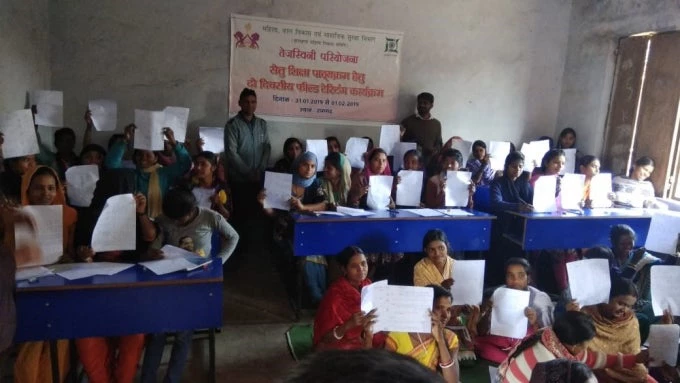
This blog is part of a series examining women’s economic empowerment in South Asia.
“Time is running out for us. Even if we want to do something we can’t do it. We do the hard work but still do not get the success,” says young Rani with a sense of urgency underpinned by an acute awareness of what adulthood holds for her.
The disappointment of unmet aspirations is all too evident in her words.
Rani lives in Jharkhand, a state in Eastern India with a large youth population—one-third of its 33 million people are between 10 and 24 years old .
Their youthful energy holds great promise for the development and growth of the state.
But sadly, adolescent girls and young women from the cities of Ranchi and Dumka to rural districts such as Koderma and West Singhbum often echo Rani’s downhearted feelings.
Many of these young women aspire to better education, skills, and jobs.
According to a recent World Bank and Government of Jharkhand survey, 86 percent of unmarried girls in Jharkhand want to complete secondary school and work after marriage . Nearly half of them desire to attend university. When asked about their career choices, they want to be teachers, doctors or nurses, join the police, or take up jobs in tailoring.
But reality belies their expectations as 62 percent of young women between 16 and 24 are not engaged in any form of education, training or employment.
Financial constraints account heavily for these low numbers-- 39 percent of the state’s population lives below the poverty line, including vulnerable communities from discriminated castes and tribes.

For example, schoolgirls are unable to pay for tuition, books, and uniforms. The disproportionate burden of domestic duties and unsafe public spaces further limits their educational potential.
The existing low percentage of girls enrolled in school declines further when girls reach 16 to 17, and their families expect them to marry and assume household responsibilities.
What will it take to open a path toward education, skills, and jobs ?
The Jharkhand government’s Department of Women, Child Development and Social Security together with the World Bank has sought to address these questions through the Tejaswini – Socioeconomic Empowerment of Adolescent Girls and Young Women Project. Tejaswini brings together global evidence on effective approaches and state-level diagnostics to address the multiple constraints adolescent and young women encounter .
The project relies on community youth clubs (Tejaswini clubs) to involve adolescent girls and young women in 17 districts across Jharkhand in a comprehensive life skills curriculum with modules dedicated to psycho-social skills, resilience, health, nutrition, and financial literacy. Trained youth facilitators from the peer group teach the life skills curriculum and motivate their students .
Also included are courses to develop marketable vocational and business skills for better employment or self-employment opportunities.
Interventions are also tailored to the specific needs of the community. For instance, Tejaswini clubs are located as close as possible to girls’ homes to overcome their mobility constraints. Out-of-school girls can continue their studies by accessing non-formal education through the project .

In remote parts of the hinterland, where training facilities are scarce, the project offers incentives for providers to deliver vocational training and non-formal education locally.
Additional cash incentives encourage students to participate and complete their vocational skills training and non-formal education.
In Dumka and Ramgarh districts, an intensive version of the model provides designated Tejaswini Kendras or safe spaces with a counselor and bridge educator for vulnerable groups from certain castes and tribes.
This work is combined with broader community outreach efforts to foster trust and ownership among families and community leaders, especially fathers who hold influence over their daughters’ lives.
The five-year project will benefit 680,000 adolescent girls and young women in Jharkhand and improve their chances of completing higher education and acquiring the skills needed in the labor market .
Ultimately, we hope that a generation of women will become resilient and self-confident, earn their own money, create new businesses, and make their communities more prosperous.
The guiding force for the Tejaswini project is enshrined in the name itself: Tejaswini in Hindi means luminous, bright and life-giving, a ray of hope that gives girls in Jharkhand a chance to shine.
Related: National Rural Livelihoods Project




Join the Conversation